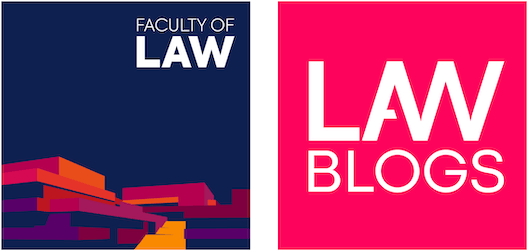Gautam Bhatia on an Introduction to a Transformative Constitution
In a talk organised by the South Asian Law Discussion Group on 29 October 2018, Gautam Bhatia, a candidate for the DPhil in Law at the University of Oxford, discussed the prologue to his book on a transformative understanding of the Indian Constitution. Leo Boonzaier, a DPhil student in legal philosophy at Oxford, and Ndjodi Ndeunyema, a candidate for the DPhil in law at Oxford, responded to his presentation.
Posted:
Time to read:
In 3 recent judgments, Indian courts have viewed the Constitution as not merely an amalgam of parchment guarantees against state excesses, but as a document embodying a vision of a fairer, more inclusive and more progressive society.
The first judgment, Harsh Mander v Union of India, delivered by the Delhi High Court, decriminalized begging, by declaring unconstitutional several provisions of the Anti-Beggary Act – a colonial relic, on the ground of their inconsistency with Article 14 (the equality clause); Article 19(1)(a) (the free speech clause) and Article 21 (life and personal liberty clause) of the Indian Constitution.
In the second judgment, Navtej Singh Johar v Union of India, the Supreme Court declared unconstitutional Section 377 of the Indian Penal Code which criminalized voluntary sexual intercourse amongst same-sex individuals. In so doing, the Court viewed the Constitution as a “great social document, almost revolutionary in its aim of transforming a medieval, hierarchical society into a modern, egalitarian democracy.”
In the third judgment, the Supreme Court struck down a prohibition on the entry of women of menstruating age in the Sabarimala temple in Kerala. One judge in the majority, Justice D.Y. Chandrachud, offered a vision of the Constitution as being transformative in character, in setting up independent institutions of governance and granting the promise of full citizenship to those hitherto deprived and marginalized.
Against this backdrop, Gautam Bhatia’s new book on transformative constitutionalism could not have come at a more opportune time. As Bhatia explained, his book pursues four key objectives. First, it problematizes the notion that the Constitution is a conservative document, aimed at facilitating transference of power, as opposed to a fundamental transformation of the social and legal structures prevalent at the time. Those who support this notion, Bhatia argued, cite examples of how more than 75% of the Constitution was borrowed from the Government of India Act of 1935; setting up of the Westminster system of Parliamentary democracy; and retention of the power to pass ordinances by bypassing the legislative process.
Second, and relatedly, instead of adopting this narrow canon of interpreting the Constitution, which entails very limited engagement with the constitutional text and the context of its framing, Bhatia argued that constitutional interpretation must be conducted in a broader fashion. Drawing on the writings of the civil rights lawyer K.G. Kannabiran, Bhatia stated that the Constitution should be viewed as embodying the hopes and aspirations of the society in which it was framed. To illustrate, Bhatia stated that the full import of the guarantee of equal protection cannot be grasped without studying Samya, Bankimchandra Chatterjee’s 19th century influential treatise on equality or the prohibition of gender discrimination without paying heed to the voices of the women who participated in 19th century debates on restitution of conjugal rights.
This vision of the constitution being a transformative document finds concrete expression in two ways. First, by the fact that it transformed the relationship between the individual and state from one between colonial rulers and their subjects to citizens of a republic with a full panoply of civil and political rights. Second, by the fact that the Constitution enabled, to quote Bhatia’s felicitous phrase, a “thoroughgoing reconstruction of State and society itself.” This reconstruction was sought to be achieved by spelling out restrictions on how private individuals must deal with each other, in the shape of prohibition of denial of access to public roads and restaurants, abolition of untouchability and the prohibition of forced labour.
Third, unlike the dominant interpretive approaches currently adopted by Indian Courts, which in Bhatia’s view pay little heed to the text of the Constitution in pursuing the object of a broader sense of justice, the project of Transformative Constitutionalism operates within the confines of textual and structural constraints spelt out in the Constitution. Unlike the tool of public interest litigation, which Bhatia contended has been reduced to a tool in the hands of judges to arrive at socially desirable outcomes, the Transformative Constitutionalism approach permits an expansive reading of Fundamental Rights only to the extent that this is consistent with the text of the Constitution.
Finally, Bhatia’s conception of the approach of Transformative Constitutionalism envisages courts playing an important, but limited, role in the democratic project. More specifically, it views it within the province of courts to adopt a transformative understanding of the values of liberty, equality and fraternity, in the pursuit of a capacious vision of a democratic framework in which the forces of democratic politics can play out. What it does not do, however, is to interfere with the democratic process itself (by courts arrogating to themselves the functions of other organs of government) or by determining outcomes.
If Bhatia’s talk is any indication, his upcoming book will be of great interest to constitutional law scholars, judges and others interested in studying his views about the tools that judges should adopt to breathe life into the text of the Constitution.
Share:

